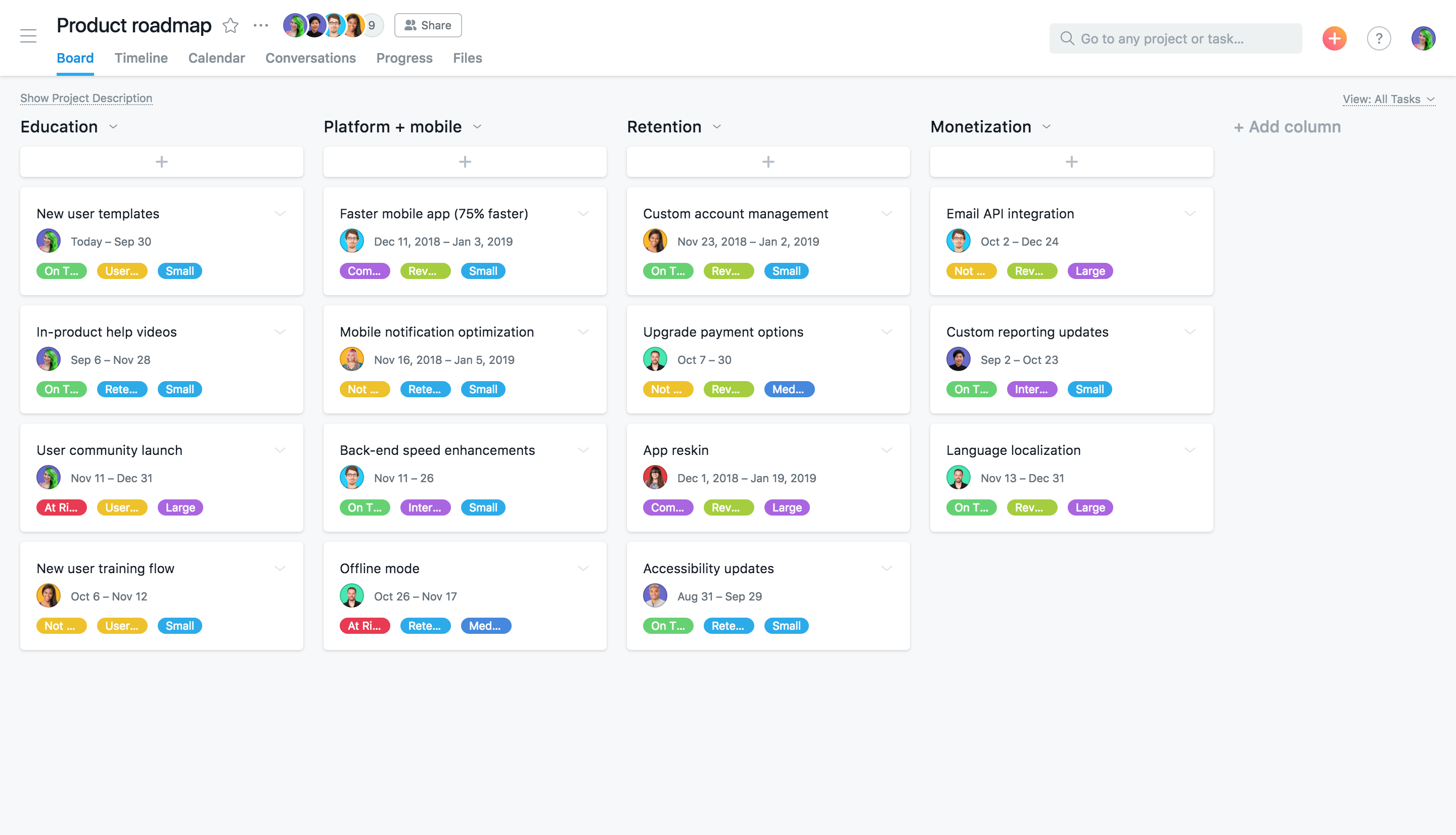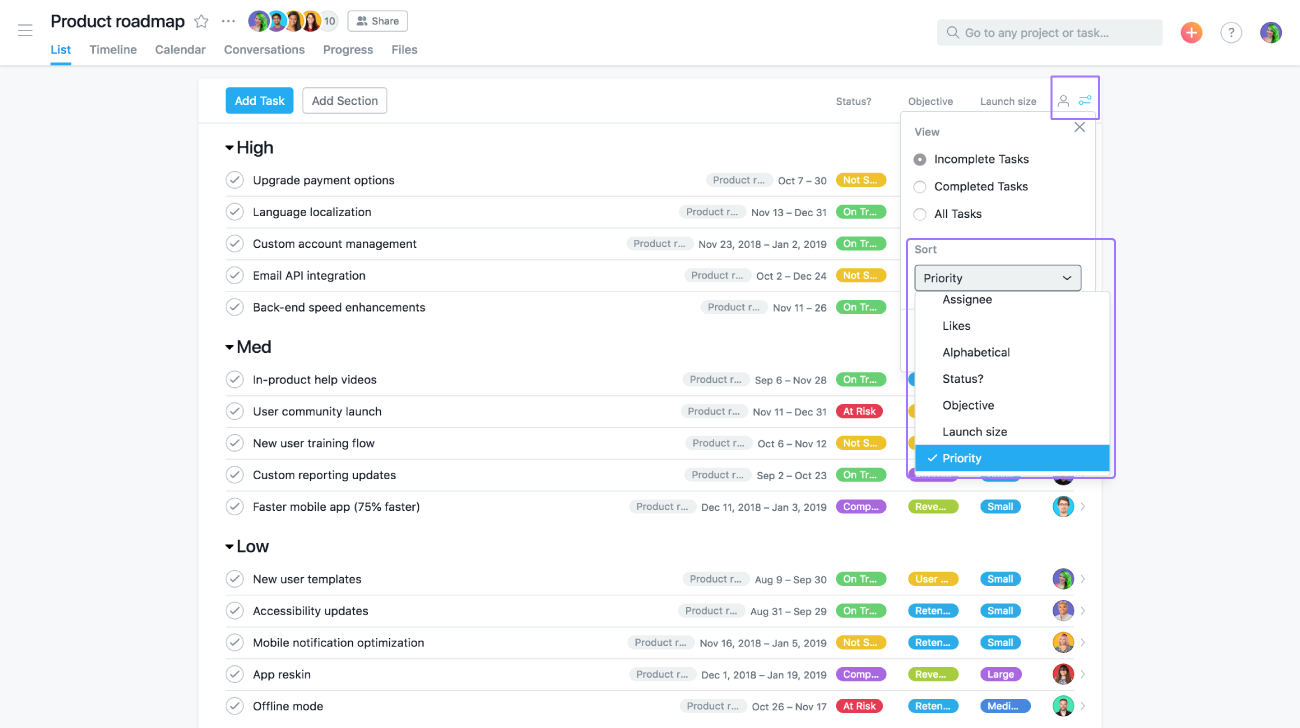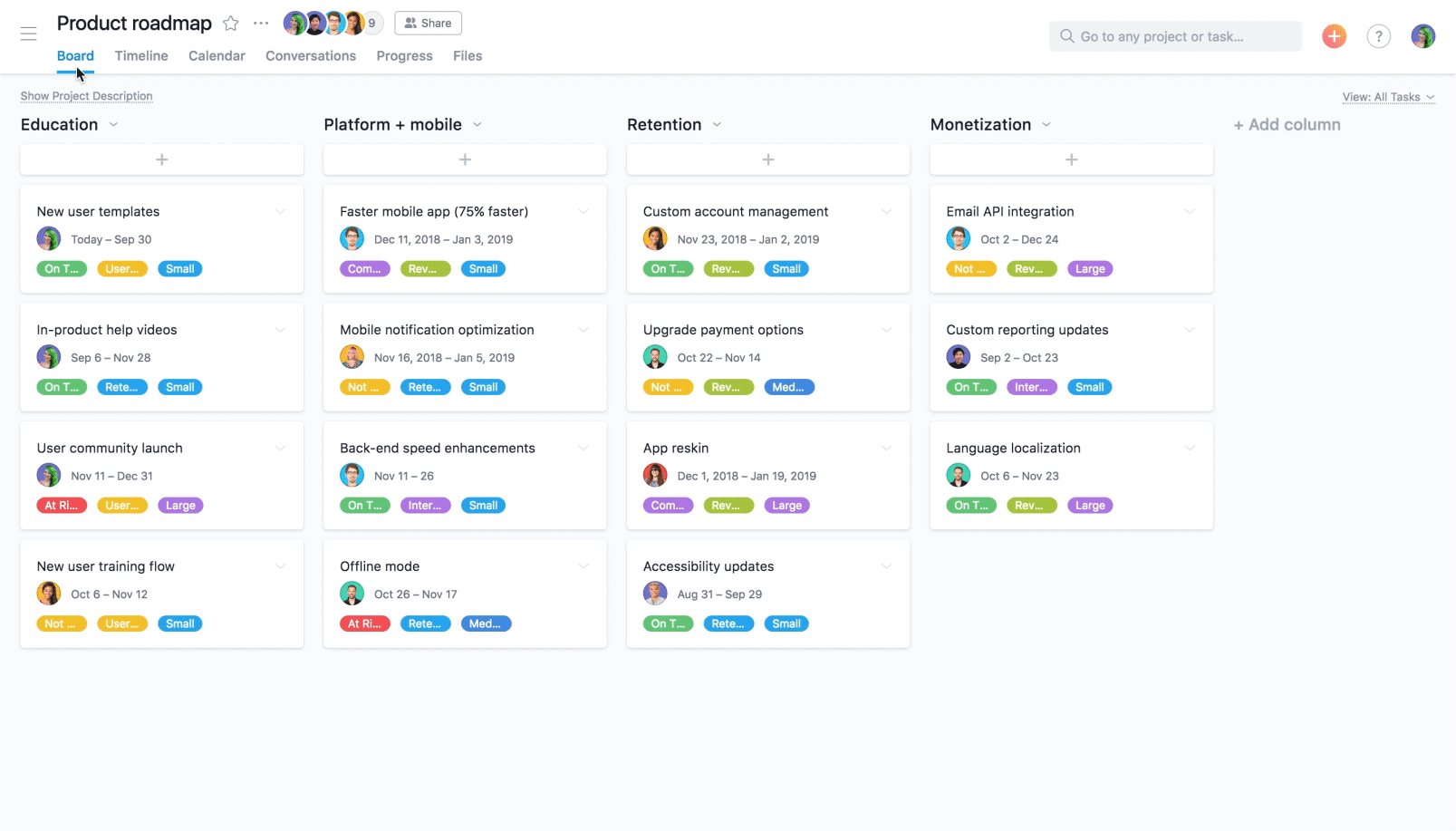On the map: product roadmap templates and tips

Wouldn’t it be great if planning your product roadmap were as easy as planning a spontaneous road trip? Just type in your destination and have the GPS calculate the directions to get there. Unfortunately, many product managers (PMs) are forced to draw and redraw the roadmap—only to find that once they embark, they have to recalculate in the rough terrain between them and their launch dates.
While Asana can’t tell you your destination, it can certainly help you plan your route faster and ensure you and your company get there together. Taking your product ideas from roadmap to launch is as easy as getting started with a project template, and you can get inspired by some of our trail-blazing customers along the way.
Taking your product ideas from roadmap to launch is as easy as getting started with a project template.
Plan your product roadmap with a template
Because many teams plan their roadmaps in decks, documents, meetings, emails, PMs have to spend a lot of time getting clarity and buy in. Is it the right plan? Who will execute it and how? How long will it take? Then after finally reaching a consensus, they see those plans in their decks, spreadsheets, and docs go stale as soon as work starts.
Instead, why not start with a product roadmap template in Asana? That way, your roadmap plans can stay in one place, where it’s easy to update them and connect them to the work to make them a reality.
If you’re building your product roadmap out in a deck or document… try this process instead. Get started with our product roadmap template, following tips from the product pros at Sonder to build your product north star. Sonder provides a new approach for travelers booking a place to stay, with spaces around Europe and North America built to reflect the cultural vibes of the cities they’re in. They use Asana to plan (and build) what’s on their roadmap to offer better experiences in more locations.
Tips and examples to build and manage your product roadmap
Make a comprehensive, dynamic roadmap.
Start with our product roadmap template (or start by creating your own Asana project) instead of a deck or doc. Projects in Asana are dynamic, with fields you can easily update to show what launches are happening when in a view anyone can see.
Pro customer tip: Sonder builds a quarterly roadmap project in Asana to share with the entire company. It gets updated if something changes, like a launch deadline—but because all updates are tracked in Asana, everyone has clarity on where the roadmap stands.
Organize your roadmap.
Instead of having a laundry list of launches, you can organize your roadmap into clear categories with sections or columns in a project. You could organize it by timeframe, PM, or launch type, and then easily move launches around if needed.
Pro customer tip: Sonder organizes their roadmap project by major themes, to ensure each launch is serving a clear purpose and laddering up to their overall company goals.

Sort your roadmap to see top priorities.
Beyond grouping similar types of launches together, you can further sort them with custom fields. For example, you could create custom fields to track launch size, priority, or the company objectives it’s tied to. That way, you can ensure you don’t have too many high priority launches all at once, or identify any gaps towards hitting company objectives.
Pro customer tip: Sonder likes to filter and sort their roadmap project by custom fields so they can see top priorities at a glance.

Standardize the information to kick off each launch.
Each PM runs things a little differently, but using a template task in your roadmap project (it’s included in our template) to copy for each roadmap addition makes it easy for PMs to capture the same details. That way, everybody is clear on the most important information up front, so nothing catches your team off guard, and when you’re ready to start planning the launch, you can start on the same page.
Pro customer tip: Sonder creates one task per launch on their roadmap, and ensures all the same details are filled out for each one. They use task comments to hone in on feedback to perfect the launch details.
Ensure your launch timelines are realistic.
Once the template task is filled out, assign the task to the PM that will lead the work, using start and due dates to show the launch timeframe. As you add more launch tasks, you can view them on Timeline to make sure your roadmap schedule is feasible (and reschedule anything if needed.)

Keep stakeholders in the loop.
For each item on your roadmap, you can add any relevant stakeholders as task followers so they can get updates in real time. For example, if you decide to move the “language localization” launch out by a month (like in the GIF above), they’ll get notified. Followers can also use task comments to find out more details, give feedback, and ask questions about each roadmap item.
Pro customer tip: With more transparency and easier ways to capture feedback through focused comments, Sonder can envision a better product offering, share it with their entire organization, then feel aligned when they start to build it.
“We’ve used Asana to support all major phases of our product cycle, from roadmapping and speccing to sprint planning and bug reporting. By centralizing our work within a single environment, we’ve managed to reduce complexity while maintaining structure.” — Sonder Product team
If you want to learn more about best practices for product roadmaps, check out our Academy course.
Build your best products yet!
As you try out our roadmap template and iterate, you can make tweaks to it as needed. With your organization on the same page, you’ll feel more confident when the time comes to prepare for a launch. If you want the roadmap template but aren’t an Asana Premium user, you can get started with a free trial.

